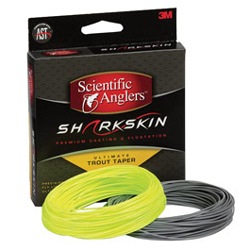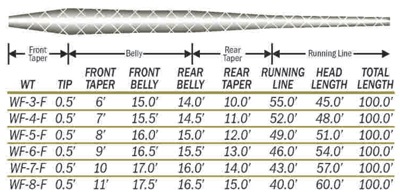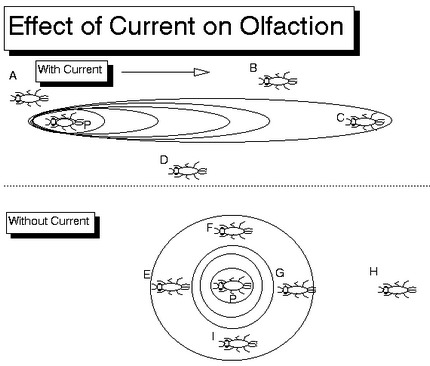 I’ve always viewed fly line purchases as a necessary evil. Choices are limited to color and taper, available from a handful of companies marketing small variances in a similar product.
I’ve always viewed fly line purchases as a necessary evil. Choices are limited to color and taper, available from a handful of companies marketing small variances in a similar product.
Advertising distinguishes the vendors more than performance and whether it’s the Volkswagen or the Porsche chosen, performance gain is small compared to price increase.
I was introduced to textured fly lines in 1985, at the time my home stream was Hat Creek, which was an equal mixture of “spring creek” slow water and traditional broken water angling. Most of the guides I fished with used a Chancellor Chalkstream, produced by the English fly line company, Masterline.
Each fellow had his own reasons, some liked the neutral gray color, some claimed the flotation was better, others preferred the genteel taper – all of them could agree that the “pebble” finish offered some small advantages over traditional fly lines.
My preference for textured fly lines led me to test a Scientific Anglers Sharkskin fly line for the last two weeks. It is a “ridged” finish not imbedded spheres like the old Masterline.
The benefits of the ridged surface drew me to this style of line years ago, as it doesn’t retain contact with the guides like a traditional line, rather it skips from ridge to ridge – akin to a fast boat in choppy seas. With less resistance or friction to paying out line, you will see some small distance improvement, more importantly it’s easier to mend or flip slack from the rod tip and keep your fly drag free.
Friction is your enemy when flipping slack to a dry fly drift, if it cannot pull from the rod, then it will pull the fly side of the line, yanking the fly with it.
I tested the Sharkskin with an older Scientific Angler line, a Cortland 444 floating line, and my last Chancellor Chalkstream line, the SA and Cortland lines were unused, and the Masterline had a decade of service on it.
Differences:
1) The Sharkskin line is the most supple of all of the lines tested, it is markedly limp. That’s a positive when stopping your cast high to induce a puddle of slack for a long dry fly drift, as limp means more line falls closer to the fly – it’s able to fit more coils in the same space.
It’s a negative when you have a bundle of running line at your feet, as it will draw knots easier. The stiffer lines will draw the knot less tight due to resistance. I picked up snarls in waste high grass from all the lines tested, at approximately the same frequency.
2) The ridged surface of the line gives it a matte finish, not shiny or wet looking like traditional smooth lines. The SA marketing material mentions, “the complete elimination of fly line ‘flash’…” – my experience testing suggests this is largely true, it was one of the reasons we fished the Chancellor Chalkstream in the technical water of Hat Creek, whether it’s ridges or pebbles the refractive qualities of this line are much diminished.
3) The Sharkskin line is ‘dry’ to the touch even when fishing. It’s not slick or moist like a traditional line, it doesn’t slip through your fingers easily, and isn’t greasy. Like the snake guides your fingers are contacting the high points, the water is in the recesses below – so a sudden hook set will not pull the line out of your fingers – something we’ve all seen occasionally.
4) You get audio feedback to stripping the line, so you can set the proper tempo without looking at anything other than where you want to fling it next. I like this feature as I’m constantly looking elsewhere at fish, bugs, and rises.
Noise Level
A single or double haul sounds like your fingers sliding down the neck of a guitar, and if you’re unaccustomed to this you may be discomforted. For us Masterline junkies – we’ve listened to “fingernails on a chalkboard” for years, this is much less evil.
Rough finish makes a noisy line and if you’ve never used one you may not like it. A double haul sounds as described, a “Wheet, Wheet” sound from the ridges screaming over the snake guides. High pitched, but not overly uncomfortable.
All that noise is abrasion. If you are using cheap snake guides or the “Japanned” black snake guides that were popular, you’ll be tearing them up. Yes, pebbles and ridges will shorten the life of snake guides, but only the cheap ones. Standard chromed snake guides are unaffected as chrome is an extremely hard surface. Older rods, especially vintage bamboo rods – with non chrome guides or whose chrome is sloughing off should not be used with this line.
I built some rods using the sneaky black snakes – figuring I could stealth up to large trout and club them. I replaced them after about five years of Masterline usage, as they had been sawn halfway through. I have to assume likewise for a Sharkskin.
Floatation:
The line floated well but there was little to distinguish it from contemporary fly lines. Coiled running line still sank at your feet and the tip appeared to be above water – even with the 40lb Maxima butt section I use. No, it won’t support a bead headed nymph, but none of the manufacturers can make that claim. It was vastly superior to the old Masterline as they sank no matter what was on the end of the line. It did not appear to ride higher in the water per advertising, it was comperable to the other lines in this regard.
Color
I tested the bright yellow green flavor of Sharkskin (available in a somber gray as well) and had no issues. This morning I was using the color as a strike indicator while fishing for bluegill. The bright yellow color is stark and visible in morning’s half light and the tip of the fly line was all that I needed to see the bass and bluegill inhale the sinking nymph.
I have used all colors of fly line in the past, and am of the opinion that color does not matter. Most fish are looking up and the line will appear black in contrast to the bright orb of the sun.

Sharkskin lines are only available in weight forward taper. This is unfortunate because I prefer double taper for my fishing. Most of the issues I had with the line were due to the weight forward component, not the line physical properties or construction.
Lawn testing with the WF-5F suggests it is a double taper until 14 feet of fly line is out of the tip, after that the weight forward taper is noticeable on the cast. Assuming a 10 foot leader, it gives you a 24′ range where it is delicate – this is fine for pocket water dry fly fishing where both distances and drifts are short.
The line is good at distance as well – where the weight forward component truly shines – punching a fly into a breeze or flinging the 60 foot dry fly at some spooky critter. It’s the in-between portion that has that heavy weight forward issue; a 35-45 foot cast where the entire belly is out of the rod tip, you don’t want to shoot anything and badly need a graceful landing. The Sharkskin line was traditional in this respect – heavy and ungraceful – putting the fly into the water too fast and with much more impact than I wanted.
That is a weight forward problem, not related to the Sharkskin at all.
In summary, I like the new line as it offers some distinct advantages over the traditional smooth fly line. Suggested retail is around the $100 dollar mark, with competitive products about 30% cheaper. For the difference in price you’ll get 6-8 feet of additional shoot, the ability to mend and add slack with less effort, and a positive grip on a dry line.
I would recommend that you cast one before buying just to test your attenuation to noise. It’s likely the first thing you’ll notice about the line and you may not care for it. Most fly shops will accommodate your testing a line on one of their rods, just ask.
If this was available in double taper I would be reaching for my piggy bank.
Most fly lines will last a decade or better with even marginal treatment. It always sounds more expensive than it works out to be, and considering the last of the Masterlines are now $135, this is cheap. I’m down to my last Chalkstream, so I’ll likely pick up a couple to cover me for the next twenty years.
Update: This line is rough on the stripping finger. A sustained 6-7 hour nymph outing can produce visible damage and increased sensitivity on the finger that the line is being stripped over. My fingers have fair callous and are not overly pampered, last week’s outing is still visible on my forefinger after a week without touching the line.
Technorati Tags: Sharkskin, Scientific Angler, fly line, Masterline, Chancellor Chalkstream


 I’ve always viewed fly line purchases as a necessary evil. Choices are limited to color and taper, available from a handful of companies marketing small variances in a similar product.
I’ve always viewed fly line purchases as a necessary evil. Choices are limited to color and taper, available from a handful of companies marketing small variances in a similar product.